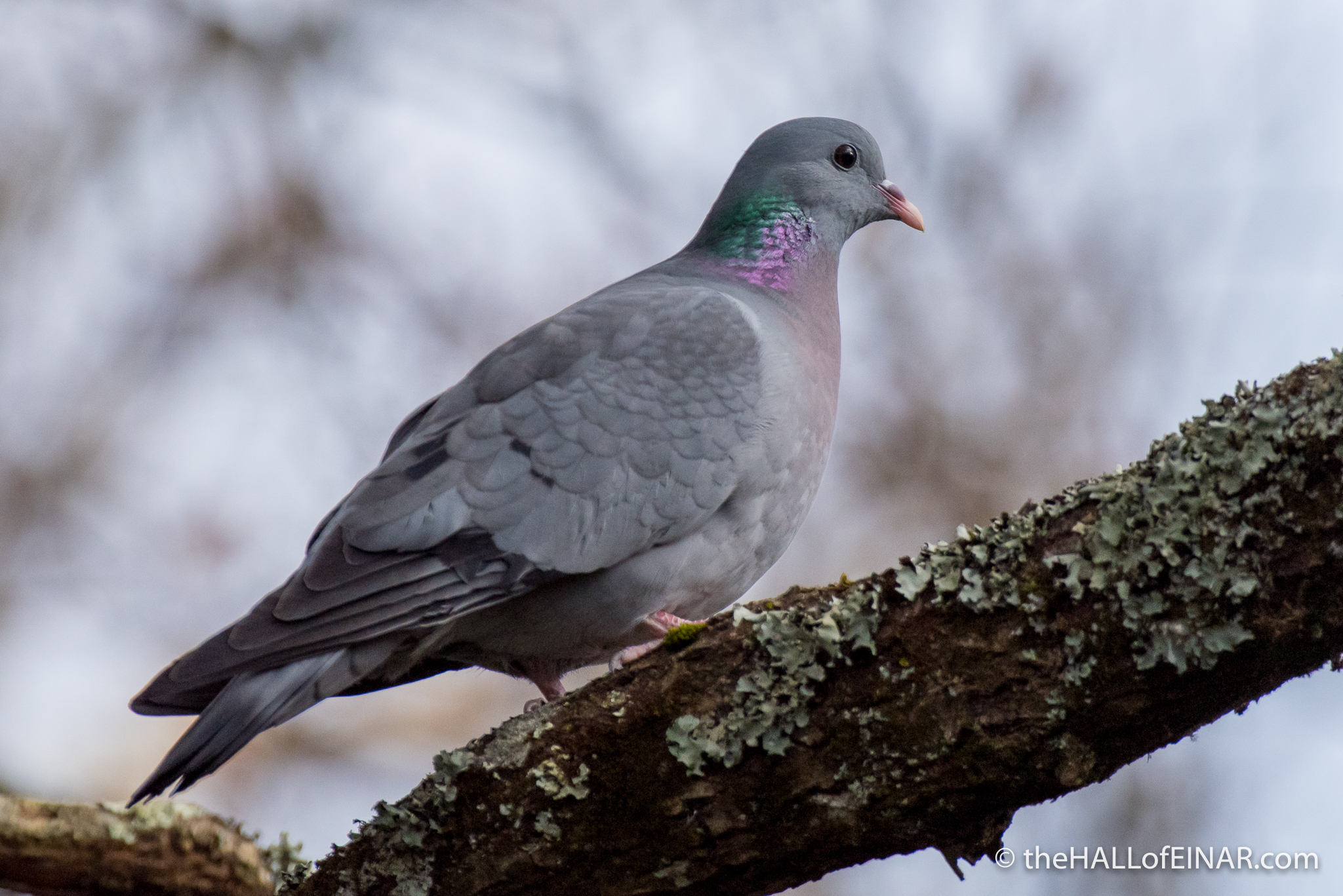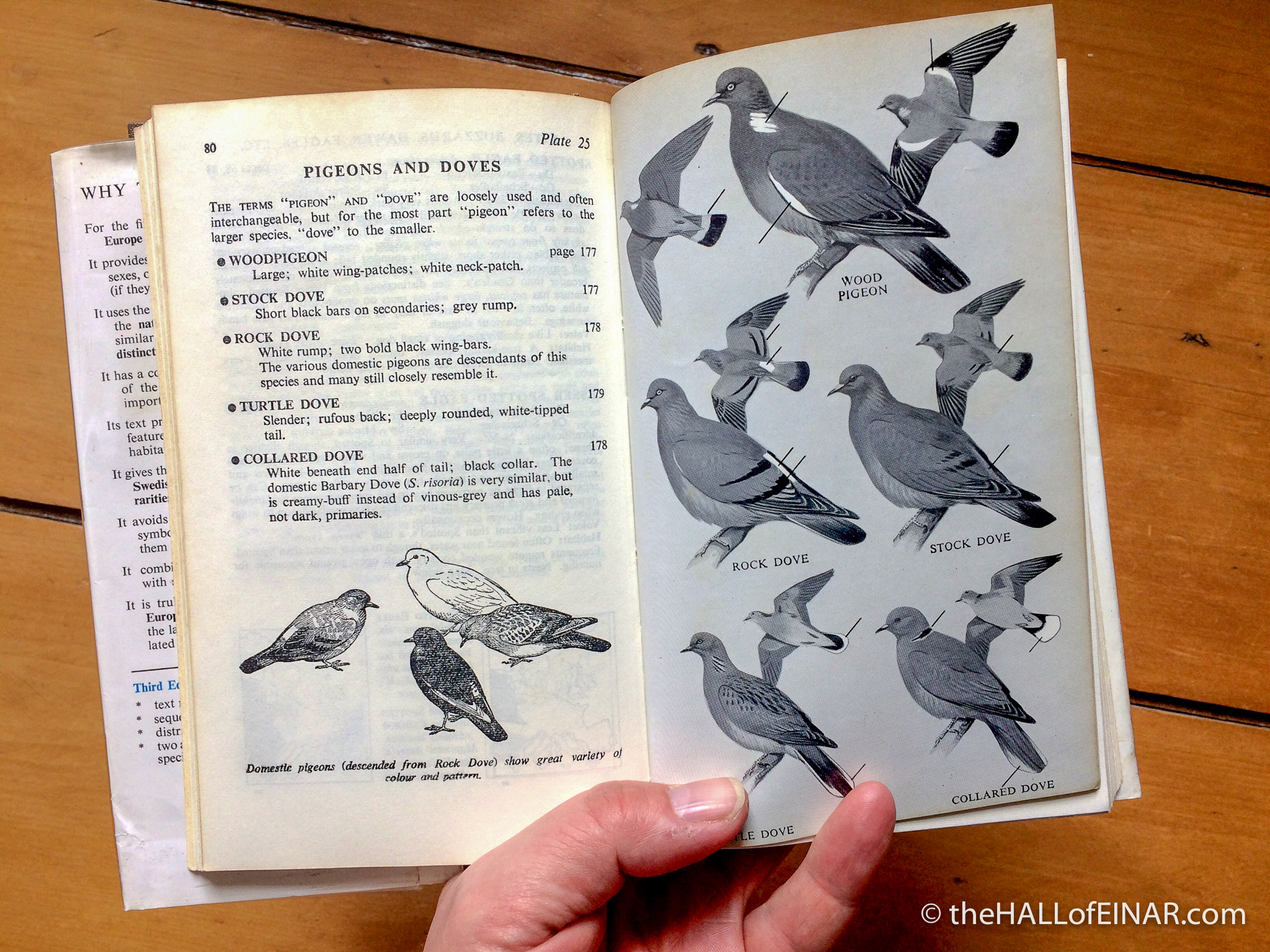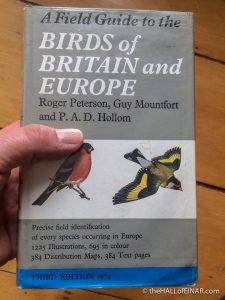Stock Dove
There’s a pigeon above me. I think it’s a Wood Pigeon but it looks far too small and scrawny. It’s silhouetted in the trees above me. I decide to take a photograph of it anyway, I don’t know why, and think no more of it.

Back home I develop my photographs on the laptop and stare at the one of the strange pigeon. That’s not a feral pigeon. It’s certainly not a Wood Pigeon. It must be a Stock Dove Columba oenas:

Stock Doves are wild birds – their name comes from the Old English ‘stocc’ which means a log, as they nest in hollows in old trees. They would once have been one of our commonest birds but since humans burned and cut down most of the ancient forests in Britain their numbers have collapsed.
My old bird book comes in useful:
Back in 1974 I was ten years old when I bought this book for £2.95. Given the different paper needed for printing text and images the ‘plates’ or pictures of the birds are in a different place from the text which relates to them. That means the index has two page numbers for each species, one for the painting and one for the writing. Because of the cost of coloured reproduction, not just the ink, but the number of times the paper had to go back into the printer for each colour, many of the plates are greyscale and not colour. All the gulls? Grey? All the waders? Grey? All the doves and pigeons? Well, they are grey as well. How did anyone identify anything back then?

This Stock Dove is more beautiful that that grey illustration could possibly ever be.
Here’s a Feral Pigeon in Siena in Italy:
Here’s a Turtle Dove in Oxfordshire:
And a Wood Pigeon in Devon:
They all deserve colour illustrations. What do you think?
